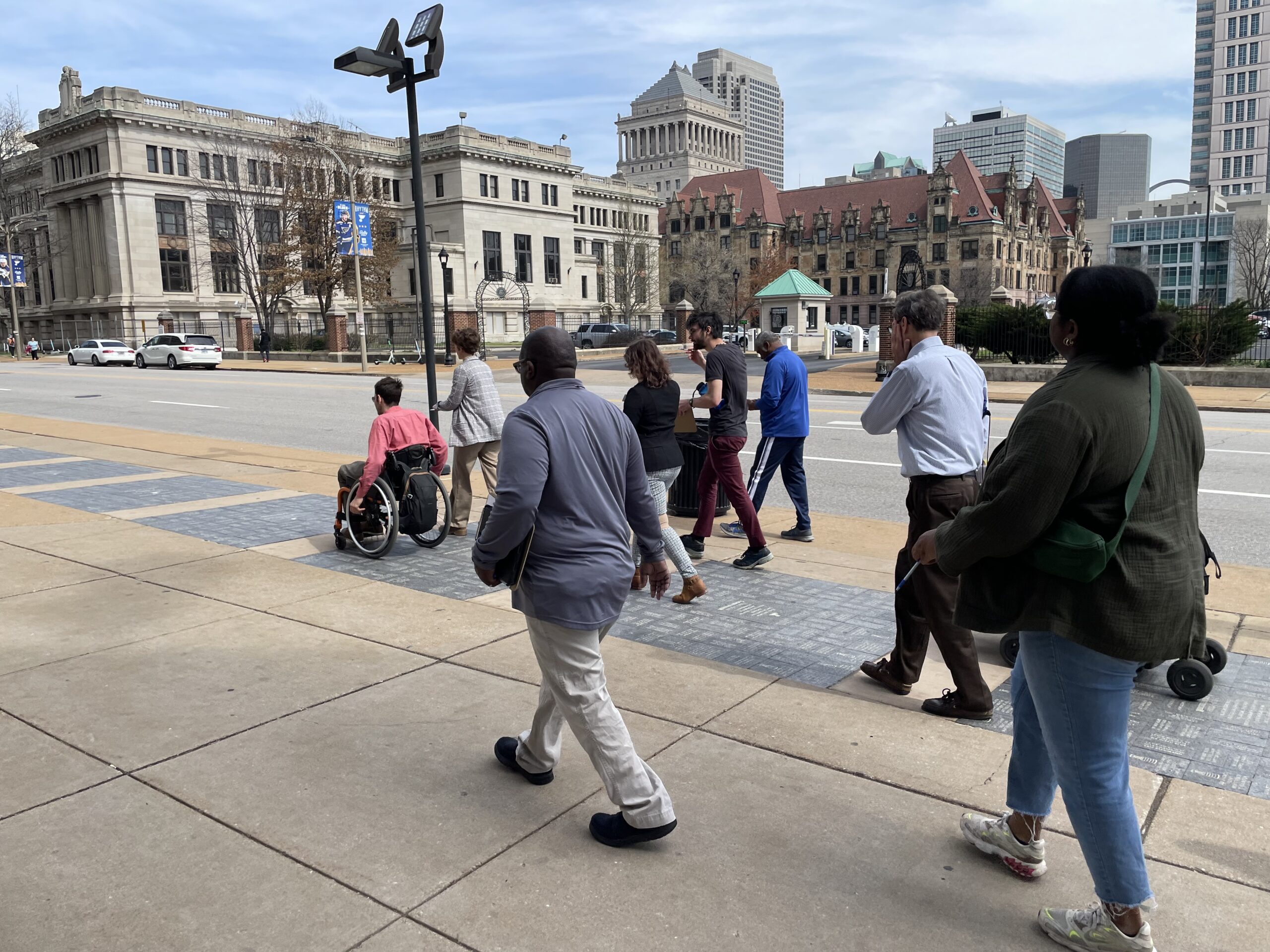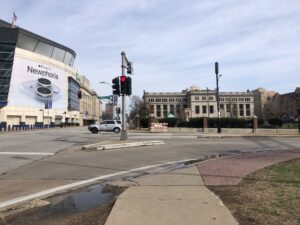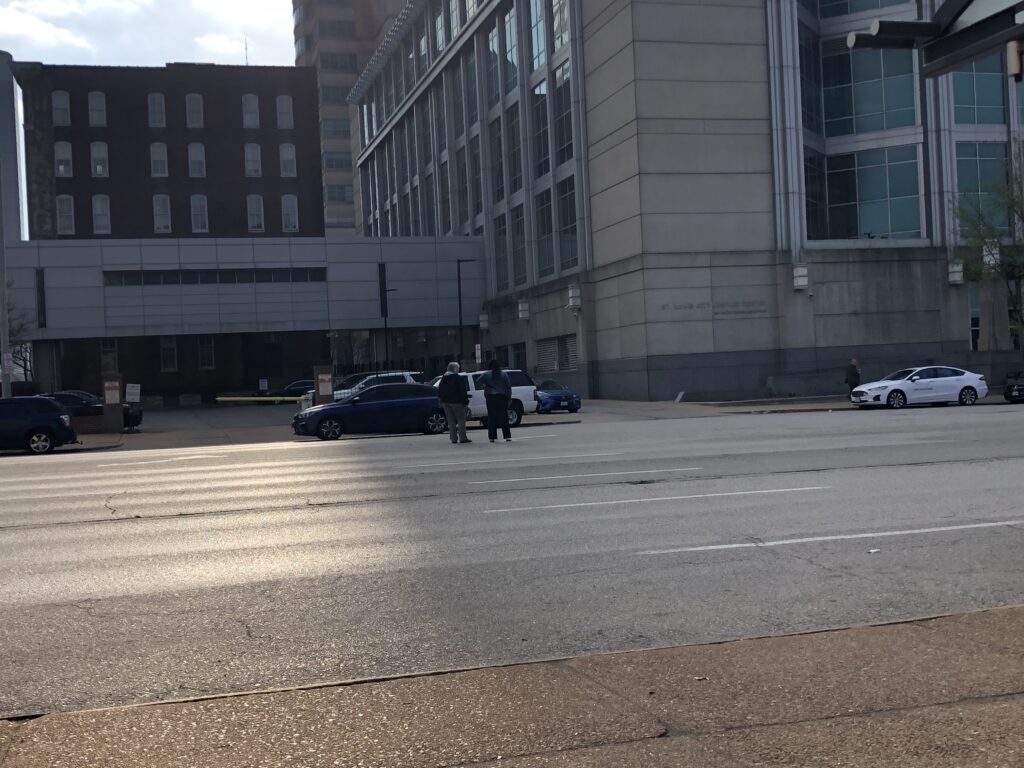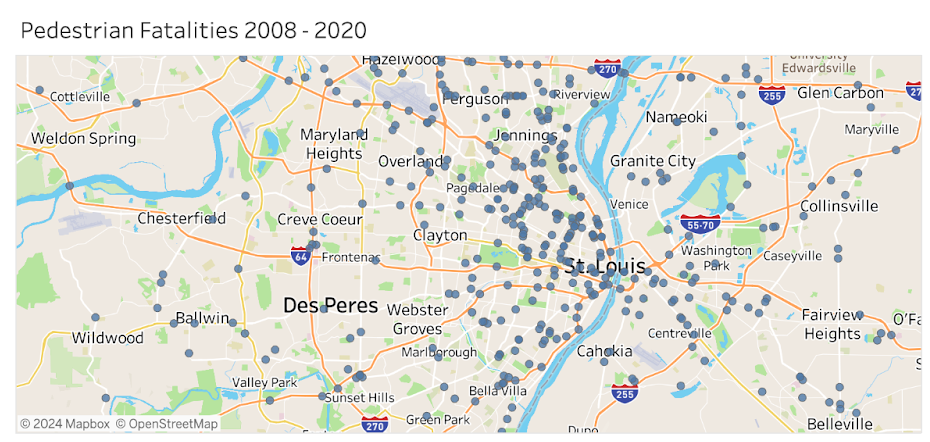As part of a technical assistance project to help local decision makers understand the needs for better mobility and craft stronger policies, I recently had the opportunity to visit and explore one of the great cities of the Midwest–St. Louis, Missouri. Like most American cities, St. Louis clearly demonstrates the impacts of design that prioritizes high-speed driving and punishes all other forms of mobility.

Wednesday April 3rd is National Walking Day, a day when people are invited to consider walking as a way to improve their health and wellbeing. The social, economic, and health benefits of walking (or for people like me, rolling) are numerous and significant. So why don’t people walk everywhere already? Why do we need a special day to encourage walking? The simple truth is most people in this country live in places that make walking undignified, dangerous, or impossible. Our cities, towns, and rural areas have been designed around driving and moving cars as quickly or conveniently as possible. Most people do not live in places where they can easily walk to work, school, stores, or other essential places and so it must be celebrated for the rare thing it is.

SGA promotes Complete Streets because we understand that when it comes to transportation, you get what you build for. If you build your city with wide, high-speed roads and lots of parking lots, people will drive. If you build safe, attractive and interesting streets that welcome and protect pedestrians and bicyclists, you will get them instead. Complete Streets are an approach that prioritizes the needs of all users and helps us shift away from dangerous and unhealthy street design.
During my trip to St. Louis, I conducted a technical assistance workshop focused on Complete Streets, consisting of a community meetup meeting, a meeting of government officials and stakeholders, and a walk audit with government officials and community members. I saw firsthand that residents want to walk more but need the support of policy and resulting infrastructure to be able to do so on a regular basis.
“I walk, ride public transit, and cycle to get around the region. I believe traffic safety and climate justice matter more than the perceived convenience of cars.”
—participant in St. Louis community meetup
“Safety for my children is important.”
—participant in St. Louis community meetup
For a simple illustration of transportation priorities in St. Louis, just look at City Hall. Over half of the block on which City Hall sits is dedicated to parking. Allocating this much space to parking is not only inefficient and wasteful, it also creates an environment that is unfriendly for pedestrians and sends clear signals about how one is supposed to reach City Hall. To get a ground-level understanding of the built environment and the experience of those living in the area, a group of local government officials, community organizations, concerned citizens, and I conducted a walk audit of the area surrounding City Hall.

We found many obstacles and issues while walking and rolling around the area. Sidewalks in many places were in poor condition, the sprawling parking lots left destinations far apart, and there were multiple obstacles for people with disabilities such as uneven surfaces and crumbling pavement. In addition to being unpleasant and challenging, the streets around City Hall are also dangerous. The block around City Hall is ringed by wide streets with multiple lanes in each direction and few opportunities for pedestrians to cross in safety and dignity. Combined, these factors create hardships for anyone who walks in the area, and strong disincentives for anyone who is considering whether they should walk or drive.
Of course the area around City Hall is not necessarily representative of the entire city and all neighborhoods. However, it is literally the center of political power in the city where the Mayor’s office, Board of Aldermen, and multiple government departments are located. It’s also an important area for commerce and tourism that pull visitors from across the city and beyond. If this place is so car-oriented it’s not hard to imagine how this pattern radiates out to the rest of the city.
Furthermore, other observations and conversations with local residents and stakeholders suggest that these car-centric and pedestrian-unfriendly patterns permeate other parts as well. In fact, a look at our most recent Dangerous by Design data shows the grim reality:

Looking ahead
Does all this mean that St. Louis, and the rest of the country, are doomed to a car-centric future that makes walking difficult or impossible? We don’t think so, and there are some signs of change.
“People should decide Complete Streets. People of all types should have an equal say. Safe streets make sense.”
—participant in St. Louis community meetup
An important first step in that direction is to pass a strong Complete Streets policy. The St. Louis Board of Aldermen is currently considering Board Bill 217–a new Complete Streets policy introduced by Alderwoman Anne Schweitzer. If passed, and successfully implemented, the bill could significantly improve the way the city approaches transportation and urban development projects. Rather than relegating pedestrians to the margins, they would be prioritized in all future projects. Passing strong Complete Streets policies and creating a network of safer pedestrian-friendly streets can reverse the car-centric status quo and help people walk in St. Louis and beyond.